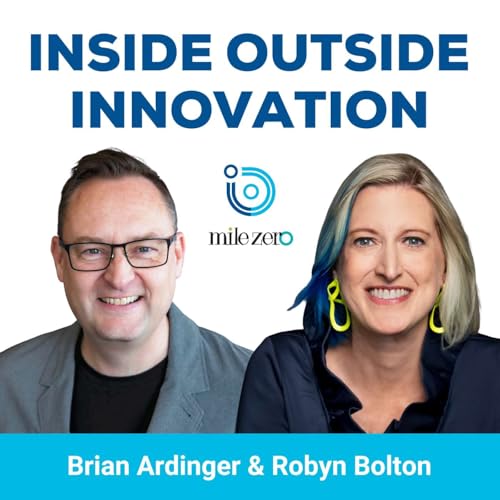On this week's episode of Inside Outside Innovation, we sit down with Jeremy Kourdi and Jonathan Besser, authors of the new book, 50 Ideas that Changed the World of Work. From the Growth Mindset to Business Model Canvas, we delve into their guidebook for some of the key concepts, models, and frameworks that are shaping business leadership and workplace dynamics. Let's get started. Inside Outside Innovation is a podcast to help new innovators navigate what's next. Each week we'll give you a front row seat into what it takes to learn, grow, and thrive in today's world of accelerating change and uncertainty. Join us as we explore, engage, and experiment with the best and the brightest, innovators, entrepreneurs, and pioneering businesses. It's time to get started.[00:00:50] Brian Ardinger: Welcome to another episode of Inside Outside Innovation. I'm your host, Brian Ardinger, and as always, we have some amazing guests. Today we have Jeremy Kourdi and Jonathan Besser, authors of the new book, 50 Ideas That Change the World of Work. Welcome guys. [00:01:02] Jeremy Kourdi: Hi, Brian. [00:01:03] Brian Ardinger: I'm excited to have you guys on because the title alone got me intrigued to reach out to you the 50 Ideas that Changed the World of Work. And when I got a copy of it, it, it did open my eyes to all the amazing work that has gone on over the years talking about innovation and workplace dynamics, and leadership. And you've decided to take on the amazing work of like, how do you tackle this mass body of work that all these other people have put together and put it into a book of your own.[00:01:31] Jeremy Kourdi: The first thing is to do it with someone. You'll know this, Brian, you'll certainly appreciate it. That life leadership business, certainly innovation is easier if you have someone that you understand, that you know, that you respect, crucially, that you have a great connection with. I always say one of the great things about rapport and connection is that that then means you can disagree, you can challenge, you can push back. And the other person that you are challenging or disagree with knows you're on their site, knows where you're coming from and appreciates that. [00:02:04] Jonathan Besser: I mean, you know, Jeremy and I have known each other for a number of years. We've worked together, we've collaborated, we've disagreed agreeably, we've argued along the way. But yeah, hopefully 50 Ideas is is the output from that discussion, from that partnership, from working together and I think is a different angle that people will enjoy and use. It'll stand the test of time. [00:02:24] Brian Ardinger: What I liked about it is, again, you talk about emotional intelligence, growth mindset, blue ocean strategy, SWOT analysis, business model canvas. I mean, the list is, is again, 50 plus, first of all, to pull that together, how did you decide which particular ideas were the ones most worthy of going into a book and, and what was the process of pulling that together?[00:02:45] Jonathan Besser: There was kind of a mental all wrestle as you went through. You know, I think Jer and I started with, with a, a long list. And yeah, with the help of our publisher and long discussions between the two of us, we whittled it down to what we thought stood the test of time. You know, what do people want to hear and what would be useful to people from, you know, Sun Tzu's Art Of War, which is centuries old, right through to some of the more modern concepts like Lean In. Samberg's Lead In is very, you really very new.And the the pieces that come in between. That help you understand the, the intention is to give people perhaps the reference book and as a first starting point. You know, the book can be one that is, you can dip into, you know, I just heard about NBTI, let me go into, yeah, to have a look at that chapter, this great reference book, to also the book that feeds through from the 50 different chapters coming through that builds upon concept and idea and references back to itself as it goes along.It was a collaboration of what we both thought. And you know, Jeremy and I have known each other a long time. We've worked well together over all those years, and it was really the way that it came together. We had a lot of synergy and not too much disagreement. [00:03:48] Jeremy Kourdi: The themes we have, I think, are absolutely on the mark, and they, you know, as Jonathan alluded to, as you alluded to Brian, they come out really strongly. And what really interested me was some of those themes. So, you see the rise, particularly over the last 30 years of psychology. Business and leadership. So really not just understanding your customers, which used to be the thing in the eighties and nineties perhaps, but currently it's getting to a level of customer understanding, empathy, customer experience, is the new frontier there.Getting to a level of that insight really, that's really valuable. So, psychology, and not ...
Más
Menos
 18 m
18 m 23 m
23 m Sep 16 202519 m
Sep 16 202519 m 21 m
21 m Aug 19 202523 m
Aug 19 202523 m 25 m
25 m 22 m
22 m 21 m
21 m

